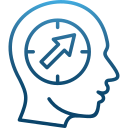Unlocking Focus: The Science Behind Meditation

Prefrontal Precision and Sustained Attention
Focused attention meditation strengthens the dorsolateral prefrontal cortex and anterior cingulate, the duo guiding goal maintenance and conflict monitoring. With practice, interruptions feel less sticky. Tell us about a time returning to the breath rescued your concentration mid-task.

Quieting the Default Mode Network
Mind-wandering often springs from the default mode network, including posterior cingulate and medial prefrontal regions. Meditation dampens this chatter, freeing resources for task-relevant processing. Try sixty mindful breaths and report whether your mental narration softened and clarity improved.

Neuroplasticity You Can Feel
Regular practice drives measurable neuroplastic changes over weeks, from connectivity shifts to gray matter differences in attention hubs. Micro sessions compound. Subscribe to our weekly protocols, then comment after four weeks about changes in your focus stamina and task completion.
Physiology of Calm Focus
Breathing Mechanics That Tune Arousal
Lengthening exhalations engages the parasympathetic system, easing arousal without making you sleepy. Practice four seconds in, six to eight out, through the nose. Track how carbon dioxide tolerance improves and tell us whether cognitive endurance rises across a full work block.
Heart Rate Variability as a Focus Barometer
Higher heart rate variability often signals flexible stress response and better attentional control. Simple tweaks help: upright posture, nasal breathing, and unbroken practice windows. Try five minutes of paced breathing, note your HRV trend, and share whether your working memory felt sharper.
Vagus Nerve and the Alert But Calm State
The vagal brake steadies heart rhythms and supports clear thinking under pressure. Gentle humming, extended exhales, or a brief cold splash can nudge tone upward. Test a two-minute vagal routine before emails and comment on how quickly distractions lose their pull.
Stress Chemistry, Cortisol, and Clarity
When Stress Hijacks the Prefrontal Cortex
Elevated cortisol biases the brain toward threat detection, sidelining planning and working memory. Short, consistent sessions help restore prefrontal leadership. Notice your focus before and after three quiet minutes, then tell us whether problem framing feels calmer and more strategic.
Allostatic Load and Cognitive Fog
Repeated stress without recovery accumulates as allostatic load, blurring attention and decision quality. Meditation provides micro-recovery, especially when combined with movement and sleep. Track mood, focus, and mistakes for two weeks and share your trendline with our community.
Acute Reset: A Two-Minute Protocol
Use the physiological sigh: one deep nasal inhale, a second shorter top-up inhale, then a long, unforced exhale. Repeat for ninety seconds. Try it before a high-stakes call and tell us if your heart steadied and your focus locked more quickly.
Designing Your Evidence-Based Practice
Aim for twelve to twenty minutes most days, or stack three five-minute bouts between work blocks. Consistency carves neural grooves. Experiment for two weeks, then share whether mornings or late afternoons produce stronger concentration for your hardest tasks.
Designing Your Evidence-Based Practice
Breath-focused practice strengthens sustained attention, while open monitoring cultivates meta-awareness of distraction. If you need laser focus, choose breath counting; for insight into habits, try open monitoring. Subscribe to receive concise guides tailored to your current project demands.



Environment and Rituals That Support Focus
Expose your eyes to morning daylight for circadian alignment, keep your workspace cool but comfortable, and sit upright with relaxed shoulders. Pair posture with gentle breath. Report whether these tweaks make your meditation carry over into longer, steadier focus blocks.



